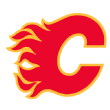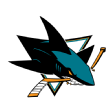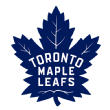There were plenty of good reasons why the Pittsburgh Penguins won the Stanley Cup last spring. Coach Mike Sullivan came in and instilled a new culture of relentless pursuit of winning that paid off in a big way. Matt Murray was an incredible story in goal. Kris Letang was a beast on defense.
But if you had to distill it down to one thing, the Penguins won in large part because teams couldn’t match up with their forward group. Try and stop Sidney Crosby, and Evgeni Malkin's line would perform. Focus on Malkin and Crosby and the Phil Kessel line would go off. That a star player like Phil Kessel rarely saw top-pairing defensemen or shutdown lines at even strength in the playoffs says everything you need to know about the matchup nightmare the Penguins became.
It goes to show you how valuable a deep forward group can be in the spring. For the Penguins, it was everything. So as we embark on the 2017 Stanley Cup tournament, here’s a ranking of all 16 forward groups in the postseason:
 1. Pittsburgh Penguins
1. Pittsburgh Penguins
The Penguins will enter the playoffs a little banged up, with Carl Hagelin and Chris Kunitz among the injured forwards, but as long as the stars are out there, this group remains an absolute bear to try to contain. Malkin has spent the past month recovering from an upper-body injury and last played on March 15, but that rest could end up benefiting the Penguins.
If we can assume that most of the forwards will find their way to the ice in time for the playoffs, the Penguins are still the gold standard. No team has two centers of Sidney Crosby's and Evgeni Malkin’s ability to anchor the two top lines. A guy like Jake Guentzel has given Mike Sullivan another skilled option, with five goals in his final five games of the season.
And this group knows how to win.
“Everyone thinks they have knowledge, but there’s only one group with knowledge,” said one veteran coach.
That group is the Penguins. No. 1 until it's proved otherwise.
We’re giving the Penguins a slight edge here because of their status as the reigning champs, but this Capitals group will be an absolute bear to handle. The Penguins can fly while this Capitals group has a tantalizing mix of speed, skill, size and depth.
You know all about Alex Ovechkin and Nicklas Backstrom. You have a pretty good idea what T.J. Oshie and playoff wiz Justin Williams bring to the table. But it’s the third and fourth lines that make the Capitals a true Stanley Cup contender.
“That fourth line, depending on the day -- [Daniel] Winnik, [Jay] Beagle, [Brett] Connolly, [Tom] Wilson -- it’s the best fourth line in hockey,” said one Eastern Conference NHL coach. "It’s so good they can actually play that line against your first line and create mismatches against the rest of the lineup.”
If Barry Trotz can do that in the playoffs, that opens things up considerably for Backstrom and Evgeny Kuznetsov. The Capitals will need Kuznetsov to be better than he was last postseason, when he had one goal in 12 games.
There’s a different look to the Blackhawks forward group, one that is much younger than previous incarnations. GM Stan Bowman opted not to add a bunch of veterans at the trade deadline, providing opportunity for guys like Nick Schmaltz, John Hayden and Ryan Hartman to fill in around the superstars like Jonathan Toews, Patrick Kane and Artemi Panarin.
The young forwards have played well this season. Hartman finished with 19 goals this season, the same total as highly lauded Maple Leafs rookie Mitch Marner.
Chicago’s run will hinge in large part on the ability of those young players having their moments in the postseason.
“The best one for me is Schmaltz, I really like Schmaltz,” said one coach. “If Chicago is healthy, they can slot them nicely. ... If they can slot them properly, then the depth is OK. As soon as the depth is not there, it becomes a tall order.”
Connor McDavid is the big draw here, and he had a Hart Trophy-worthy season in finishing with an even 100 points. But the Oilers forwards are more than McDavid, and that’s a big reason why Edmonton is back in the playoffs.
Edmonton has five players with at least 20 goals (McDavid, Leon Draisaitl, Patrick Maroon, Milan Lucic and Jordan Eberle) with Ryan Nugent-Hopkins not far behind.
As for McDavid, he’s making his playoff debut, and the expectation is he will keep on producing. He’s the best player in the Western Conference, and that gives the Oilers lofty status in these rankings.
“They’re going to target him, but he skates so well; he’s so elusive,” said an NHL coach. “Some of the plays he makes, you can’t describe it.”
In the 27 games after changing coaches, the Bruins scored 91 goals, a total topped in that stretch only by the Penguins and Nashville Predators. In the course of the season, the Bruins were the second-best possession team in the league, controlling 54.7 percent of the even-strength shot attempts. If you’re looking for a dark horse to emerge from the East, this could be the team.
Brad Marchand turned in a regular season that put him in Hart Trophy consideration, and he has strong playoff pedigree, with 16 goals in 66 playoffs games. He earned them too, with 15 coming at even strength. It’s been a few years since he’s been there, but Patrice Bergeron remains one of the league’s best playoff performers. If you’re facing the Bruins, you’d better have scoring depth, because he will shut down your best line.
It’s hard to figure what to make of the Sharks. They were good for most of the season, but then sputtered into the playoffs. Joe Thornton and Logan Couture will not be completely healthy. But if you ignore the finish, this is still a forward group with depth, experience and versatility.
“I think these guys could be ready to push,” said one coach. “They’re my sleeper that could do some damage. They’re grizzly; their young guys are good players.”
Eric Staal changes everything for the Wild in the postseason. This is now the best center group Minnesota has ever taken to the playoffs, even considering Martin Hanzal's struggles since coming over from the Coyotes. This is a veteran group, with playoff experience and depth.
There’s not a ton of firepower -- the Wild didn't have a 30-goal scorer this season -- but there’s nice balance that will give Bruce Boudreau options.
“They can sure dial it up when they have to,” said one veteran coach.
It was almost like the Anaheim veterans were just waiting for the playoffs to close in before really exerting themselves. Guys like Ryan Getzlaf and Corey Perry took a while to get going, but you know they'll be locked in for the playoffs.
“You see Getzy cranking it up now,” said an NHL coach. “He can do it all.”
The one guy who has been a constant for the Ducks is Ryan Kesler, who should win the Selke this year. He’s going to make life miserable for Sean Monahan and the other young Flames.
“Kesler has had a hell of a year,” said the coach. “Especially when those older guys weren’t going. He was the glue that held it together.”
It was a heck of an accomplishment for this young group of dynamic forwards to get the Maple Leafs into the playoffs, but their first-round opponent is just about the worst possible scenario.
As good as guys like Mitch Marner and William Nylander were during the regular season, there is some concern that they could get manhandled against a bigger, more rugged forward group in Washington.
“I don’t think they match up well with Washington,” said one NHL head coach. “But Mike Babcock is a good coach, he’ll know where to put them. ... Nazem Kadri can play against those other guys to allow [Babcock] different matchups.”
The one young player who looks playoff-ready is Auston Matthews, whose size and strength go well beyond his years. It’s only fair to temper expectations for some of the Leafs youth, but Matthews may be able to keep it rolling in the playoffs.
“He’ll be fine,” said the coach.
The Blue Jackets don’t have the speed and skill up front of their first-round opponents from Pittsburgh, but there’s no doubt that this group of forwards will make life miserable for the Penguins. It starts with Brandon Dubinsky, who will likely take on the challenge of trying to slow down Sidney Crosby.
“He’s going to have Dubinsky in his face the whole series,” said an Eastern Conference forward. “You have to play [Crosby] tight; he’s going to find a way to be successful.”
This is a young team, but there is playoff experience in the lineup. By the time he was 22 years old, Brandon Saad had 67 games of playoff experience. He was productive too, scoring 15 goals in those games for the Blackhawks. Scott Hartnell has 19 goals in 91 career playoff games, but hasn’t played in the postseason since 2014.
 11. St. Louis Blues
11. St. Louis Blues
The Blues are almost like the forgotten playoff contender, but don’t sleep on this group. You don’t go to the Western Conference finals in the previous year and then forget how to win playoff games. There isn’t quite the depth at forward as there was in previous years, but guys like Vladimir Tarasenko and Alexander Steen can still make a major impact in the postseason.
“They have guys who have been deep,” said an Eastern Conference coach. “You can be young and inexperienced and naïve. But they have young guys with experience.”
 12. New York Rangers
12. New York Rangers
The strength of this group is its depth. There is speed and skill and just enough bite up and down this lineup to make it difficult to contain in a playoff series. Chris Kreider led the team in goals, and you can feel good that he can continue producing in the postseason.
The track record for No. 2 on the Rangers' goal-scoring list is a little more spotty. Michael Grabner had a huge season for the Rangers, with 27 goals (26 at even strength), but in 17 career playoff games, he’s scored just twice. His last playoff appearance came in 2015, when he played in two games for the Islanders.
 13. Nashville Predators
13. Nashville Predators
Quick: Name the Predators forward who had more goals this season than Connor McDavid, Joe Pavelski, John Tavares or Jamie Benn.
Trick question! There’s two of them. Both Viktor Arvidsson and Filip Forsberg finished this season with 31 goals, with Arvidsson’s season being among the league’s best kept secrets. When those two were on the ice together, the Predators controlled 58.1 percent of the even-strength shot attempts.
The trio of Ryan Johansen, Forsberg and Arvidsson is a great one, but depth beyond that is concerning for the Predators.
 14. Calgary Flames
14. Calgary Flames
There’s a good chance that Ryan Kesler wipes out any production from Sean Monahan's line, which puts a lot of pressure on the trio of Matthew Tkachuck, Michael Frolik and Mikael Backlund.
Kesler will get a lot of Selke attention, but this series features at least two players who should be in that conversation, with Backlund being a guy who will be in my top three. He’s a key player in this series for the Flames.
There’s not a ton of firepower in this forward group, and Alexander Radulov's offensive drop-off is a bit concerning. In the 27 games after the All-Star break, he had just six goals and nine assists. There was an uptick in his final few games of the season, and his playoff production with the Predators (14 points in 18 games) suggests he should be comfortable producing.
 16. Ottawa Senators
16. Ottawa Senators
If the Senators advance, it’s because Guy Boucher’s trap ground the Bruins' offense down to a halt in this series. It’s a necessity because this forward group just doesn’t have a lot of high-end goal scoring. Mike Hoffman and Mark Stone generally do the heavy lifting in the goal-scoring department, but half of Hoffman’s 26 goals came on the power play. It’s hard to rely on the power play in the playoffs.
Kyle Turris will be a player to watch. He led the Senators in goals, and also scored three in four games against the Bruins.

 2.
2.  3.
3.  4.
4.  5.
5.  6.
6.  7.
7.  8.
8.  9.
9.  10.
10.  15.
15.